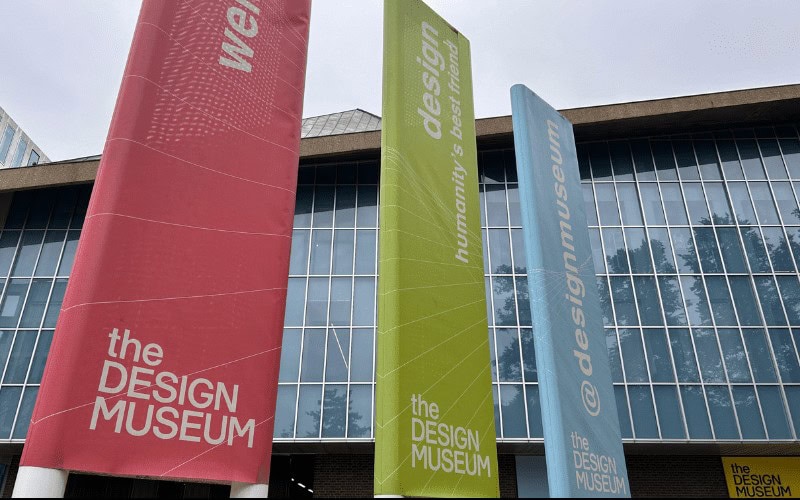Things to See at the Design Museum in London
Artsy Traveler contains affiliate links for products and services I personally use and can happily recommend. As an Amazon Associate, I earn from qualifying purchases. Please read the Disclosure for more information. If you make a purchase through these links, at no additional cost to you, Artsy Traveler earns a small commission. Thank you!
London’s new-to-me Design Museum is indeed quite new. Founded in 1989, it moved in 2016 to its spacious digs in South Kensington adjacent to Holland Park from a former 1940s banana warehouse on the South Bank.
Now the Design Museum hosts millions of visitors each year.
And no wonder! The Design Museum’s vision is “A world in which design enables this planet and its inhabitants to thrive.” Innovative exhibitions, partnerships, research and learning programs celebrate design in all its forms.

I highly recommend a visit to the Design Museum in London. Unlike many museums that are full of objects we can admire but never use, the Design Museum features objects we all use every day—from teaspoons to computers to cars. It’s fascinating to see the integral role design has played in shaping our modern world. Read on to learn what there is to see and do at the Design Museum in London!
Things to See in the Design Museum in London
Located on Kensington High Street near Holland Park, the Design Museum’s newly renovated building is spacious, airy, and chock full of interesting things to look at.
Admission to the permanent collection at the Design Museum (1) is free, just like so many of London’s major museums including the Victoria and Albert Museum (2), the National Gallery (3), and the British Museum (4).
In addition to the marvelous permanent collection called Designer Maker User, the Design Museum houses several special exhibitions which do require tickets.
Check the Design Museum’s website to see if any of the special exhibitions interest you, buy your ticket online in advance, and then make sure you save some energy to tour the permanent collection. Tickets for popular exhibitions, such as Barbie: The Exhibition that I saw in September 2024 and the current Tim Burton Exhibition that runs to April 21, 2025, sell out quickly.
Barbie: The Exhibition at the Design Museum in London
If you’re visiting London this fall or winter, then run, don’t walk to see Barbie: The Exhibition before it closes on February 23, 2025. The story of the iconic doll’s evolution from a design and marketing perspective is fascinating.
The bright, colorful (and VERY pink) Barbie exhibition at the Design Museum in London showcases Barbie’s development from her creation in 1959 to her hundreds of iterations today and includes a nod to the 2024 Barbie movie.
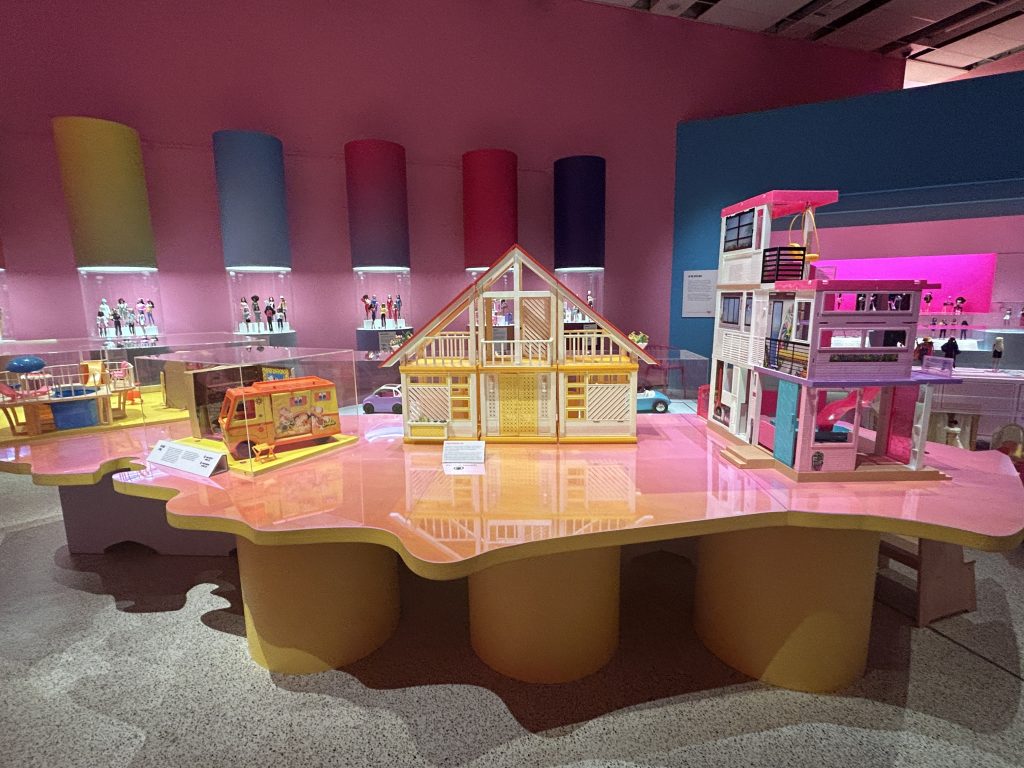
My First Barbie
I got my first Barbie when I was eight years old, and I remember loving her. I also remember my older brother trying to put my Barbie through the wringer washer. Fortunately, she survived surprisingly intact. That plastic was made to last!
My mom sewed clothes for my Barbie, a monumental achievement considering the teeny tiny size of Barbie clothes. At the time, I took her incredible skill for granted. As I gazed down at the Barbie clothes on display in the Barbie exhibition, I was astonished anew by my mother’s abilities and achievements.
For obvious reasons, I particularly liked the displays of the early Barbies. I remember coveting the high-priced Barbie Dreamhouse and Barbie cars, but they were out of reach for my family. I did know a few very wealthy girls at school who had them and were the envy of us all. Here is a selection of cars from Barbie’s early years.
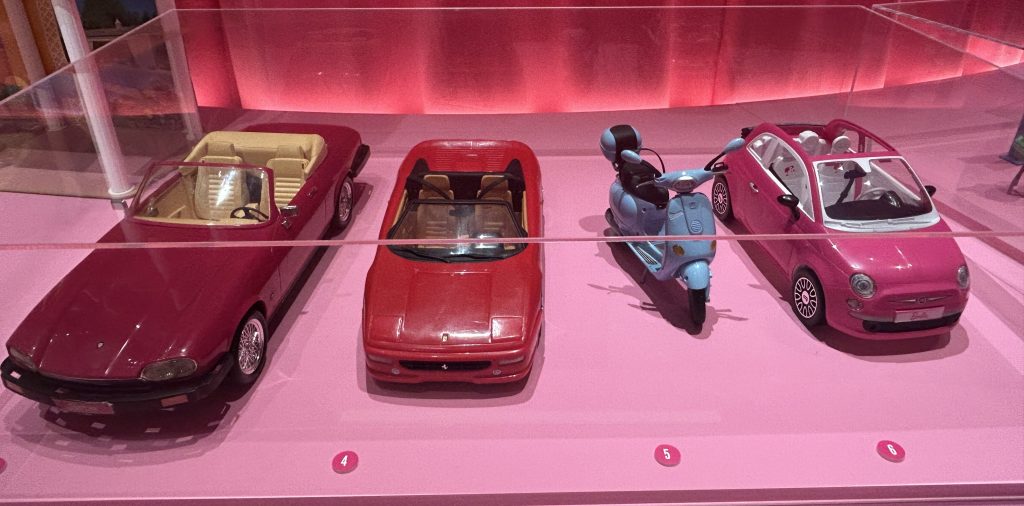
Barbie’s Success Story
Barbie sure is a design success story. The doll has evolved over the years, and while still essentially a stick-thin glamor girl, she has had some iterations that bring her closer to real life. There are different body shapes, different ethnicities and different head shapes.
Enjoying this post? Subscribe to Artsy Traveler to Receive Valuable Travel Tips and Your FREE Guide: 25 Must-Do Artsy Traveler Experiences in Europe for 2025

I’m particularly impressed by all the ways in which Barbie is shown to participate in the world—from Firefighter Barbie to Astronaut Barbie to President Barbie.
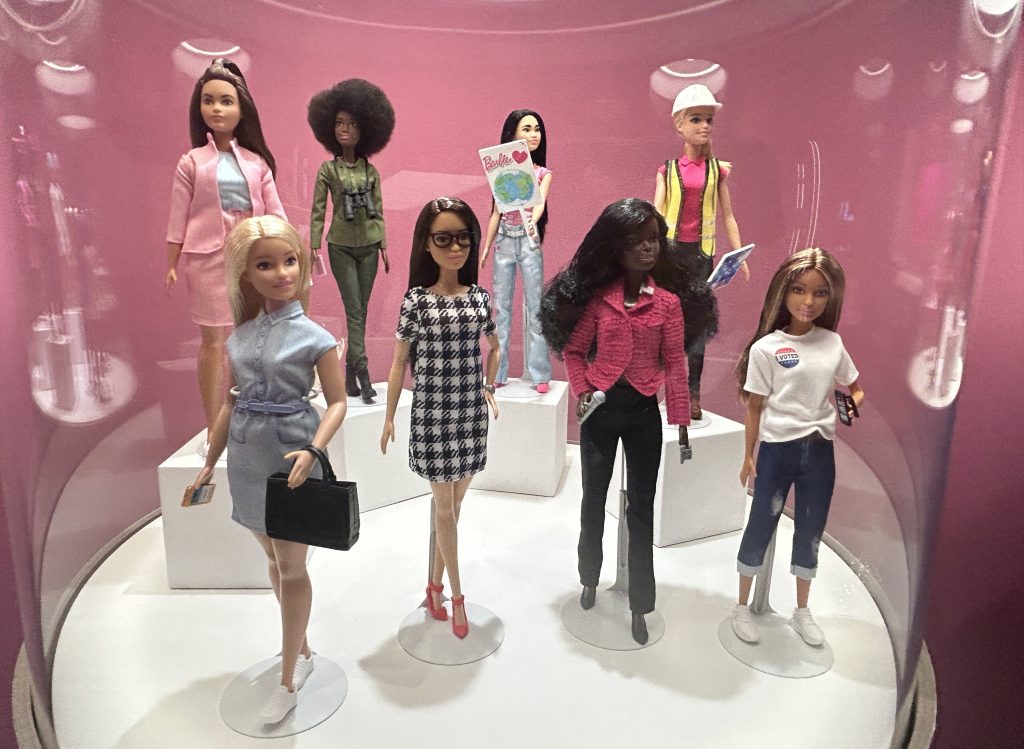
Barbie has become a much healthier role model for young girls than she was back in the 1960s. My first dolls were baby dolls in keeping with the emphasis in the 1950s on preparing girls for motherhood. Having a doll that looked glamorous, had long hair that I could brush, and that wore pretty clothes was a revelation. But the concept of a Firefighter Barbie or an Astronaut Barbie or even a Management Consultant Barbie was foreign territory indeed.
So yeah, we’ve come a long way since 1959 when Barbie first hit the market!
I’m Just Ken!
Barbie: The Exhibition does not neglect good ‘ole Ken. I snapped this photo of a collection of Kens standing tall and proud in a case of their own.
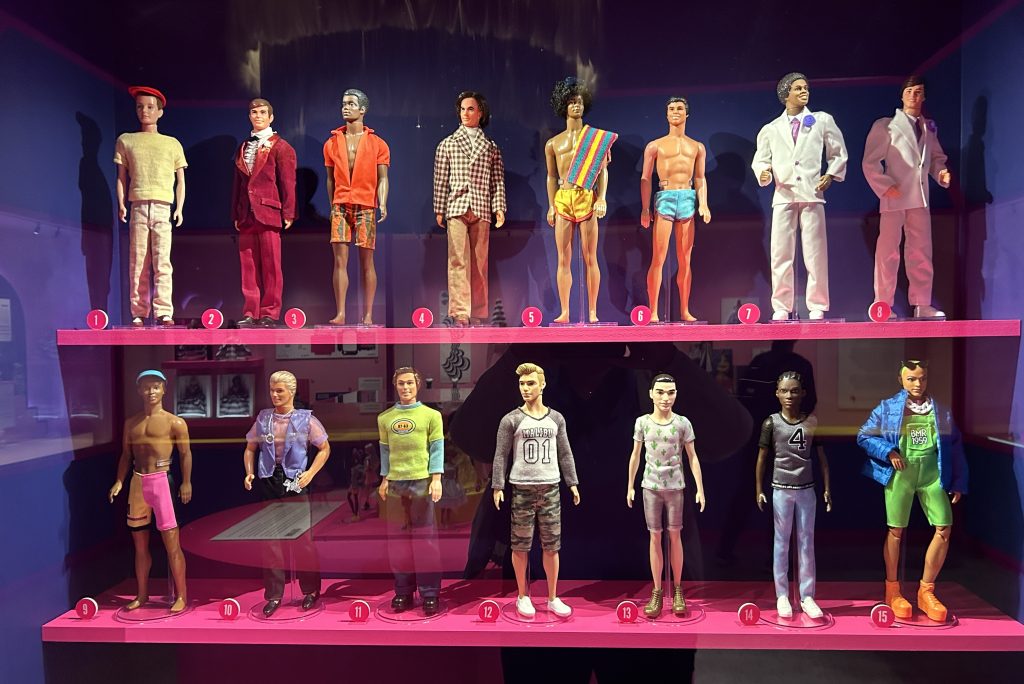
Exploring the Permanent Collection at the Design Museum in London
After touring Barbie: The Exhibition, I ascended to the third floor to tour the permanent collection of the Design Museum and admire the museum’s interior space.
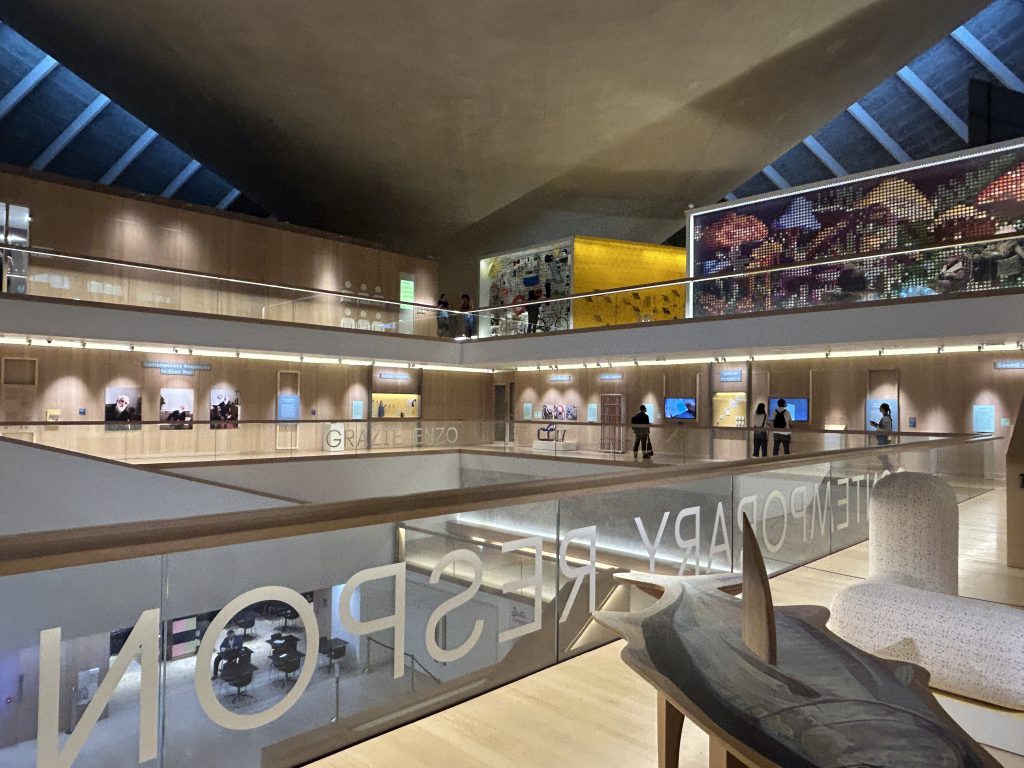
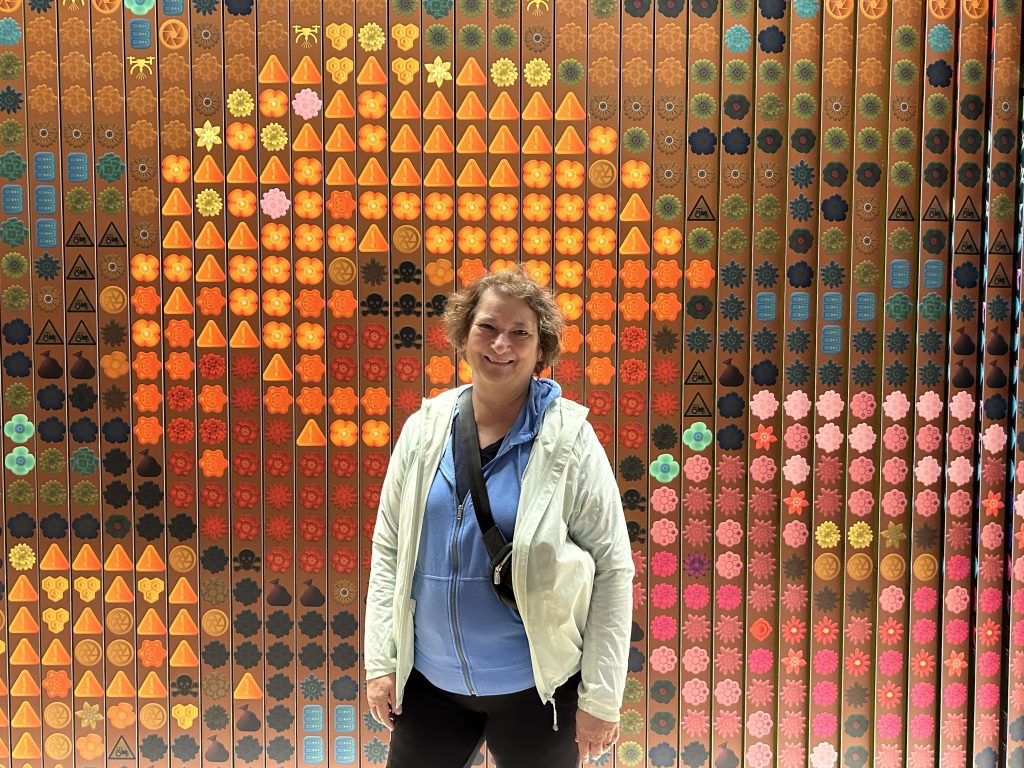
That to See in the Designer Maker User Collection
The permanent collection at the Design Museum is called Designer Maker User and it’s a stunner! The curators have done an excellent job of explaining various design concepts through the display of everyday objects, from spoons to chairs to computers.
The exhibit features over 1000 objects divided into three segments: Designer, Maker, and User .
Designer at the Design Museum
The objects in the Designer section are displayed in ways that invite the visitor to contemplate the thought process of the designer who must envision how the designed object will be used. I like the quote on one of the information plaques: “The role of the designer stretches from the spoon to the city.”
In this section are displayed objects such as a traffic light, the Anglepoise lamp, and a Tube carriage.
Maker at the Design Museum
The Maker section presents objects in relation to the evolution of manufacturing. Included are café chairs, a Model T Ford, robotic arms, and 3D printers. Objects such as tennis balls and the London 2012 Olympic Torch are presented at different stages of production.
As I wandered through the exhibits, I was constantly amazed by the ingenuity of the human mind. Take tennis, for instance. First, someone had to want a ball they could bounce and hit with a racket. Then, someone else had to figure out how to make a prototype of the ball. Finally, a whole team of brainiacs had to figure out how to manufacture thousands of balls so that anyone who wanted to could play tennis. Mind-boggling!
User at the Design Museum
The User section explores the interaction between people and brands that define the modern world. As a computer user for many decades, I was especially taken by the display of electronics, from the clunky Apple computers of the 1980s to the sleek Macs of today. The red Sony laptop in the picture below is identical to one I had a good twenty years ago. I really liked that computer!
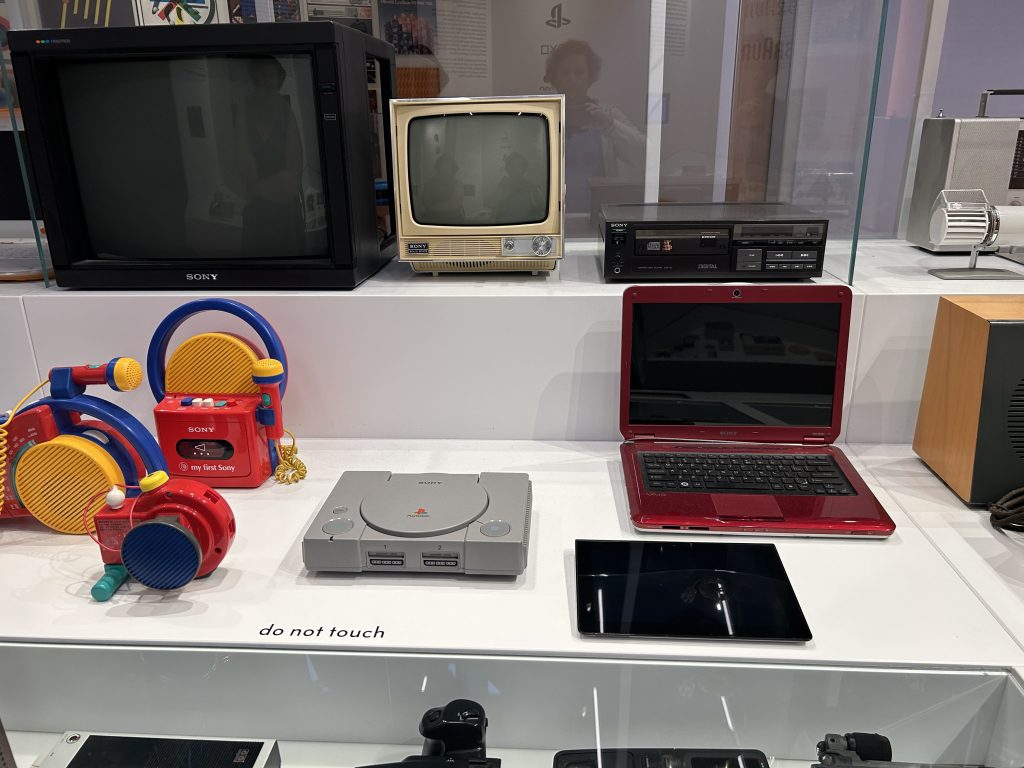
Crowdsourced Wall at the Design Museum
Outside the Designer User Maker exhibit is the Crowdsourced Wall. Here are displayed more than 200 objects that people from 25 countries nominated as their most important objects. The diverse selection of objects is meant to “demonstrate the intimate relationships we have with the everyday objects that shape our lives.”
Items on display include a red bucket, an Underground sign, a bicycle, a green plastic stool, a sewing machine, a drill, a mop, a pair of jeans, and a lot more. The fascinating selection is so much fun to look at since these are objects that we all know and use.
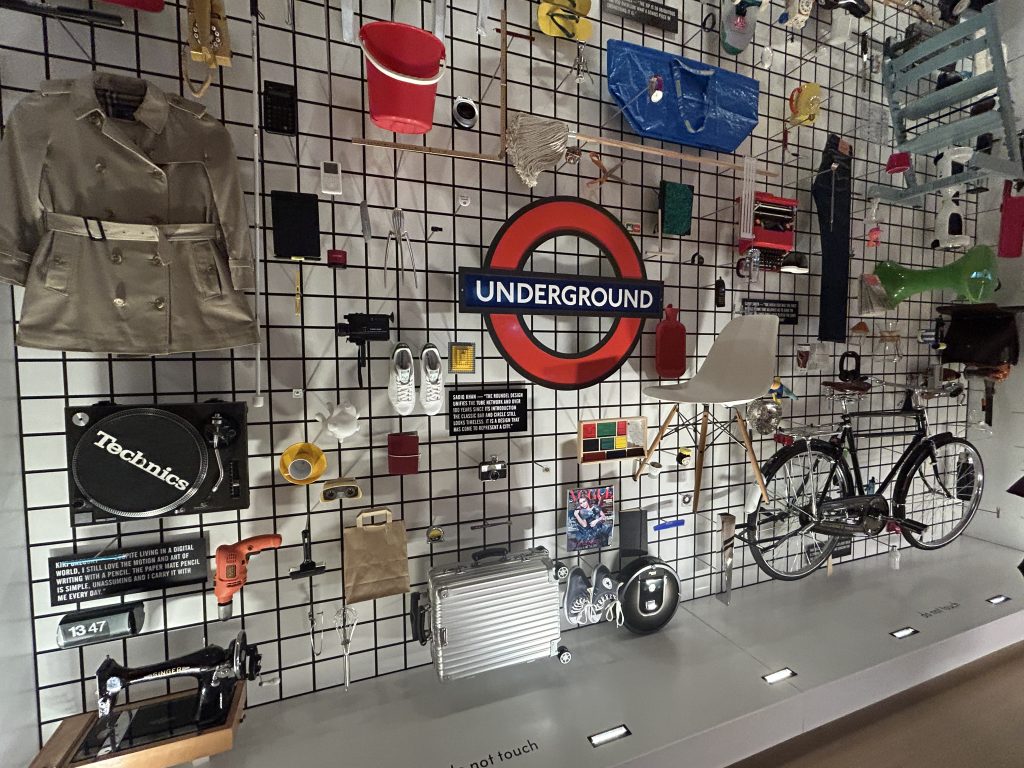
Checking Out the Rods at the Design Museum
I am arrested by a display of…rods! I didn’t know rods were a thing in the UK, but they certainly were a cherished part of my early school years. For those who don’t know, rods are various colored plastic rectangles used to teach children arithmetic.
A white rod represents one and is one-tenth the size of an orange rod that represents ten. In between are red for two, green for three, and so on. When I was in Grades 1 and 2, the highlight of a day was when you finished your work early and the teacher let you go to the back of the room to “play rods.” I spent many a happy hour solving arithmetic problems with the tactile aid of those plastic rectangles that felt so smooth and were so pleasingly colored. Rods are still in use to this day, although my daughter doesn’t remember having them when she was at school in the 1990s.
What a shame for her! I credit rods with giving me a lifelong penchant for arithmetic. Mathematics? Not so much, but I’m a dab hand at addition, subtraction, multiplication and division without a calculator! Thank you, rods.
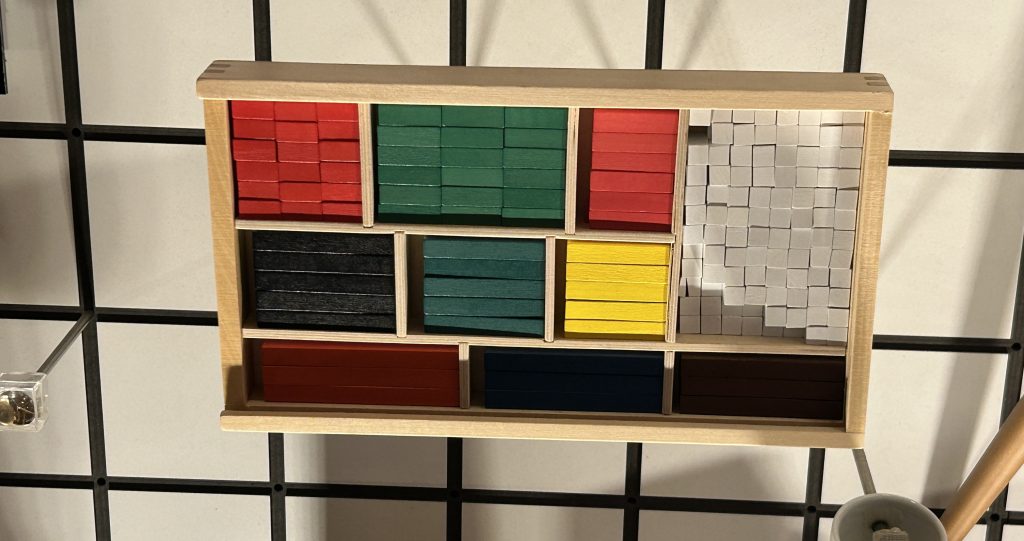
The box of rods on display at the Design Museum isn’t the only object that catapults me down memory lane. The entire museum is one big time-travel experience.
If you use household objects (and who doesn’t?), then check out the Design Museum. You’re bound to find at least a few displays that trigger happy memories.
The Design Museum Shop
After you’ve toured the exhibits, check out the stylish gift shop. You’ll find all sorts of cool design items there.
Practical Information about the Design Museum in London
The Design Museum is located at 224–238 Kensington High Street and is open Monday to Thursday from 10:00 to 17:00, and Friday to Sunday from 10:00 to 18:00. Some ticketed exhibitions may remain open later on weekends. The Design Museum is closed on Christmas Eve, Christmas Day and Boxing Day. Admission to the permanent collection is free. Check the website for more information.
Touring London
London is full of intriguing museums and experiences, some very much off-the-beaten path. GetYourGuide has plenty of options to choose from. Here are a few:
Staying in London
London is not an inexpensive city, but nevertheless, I’ve discovered some excellent places to stay that, while not bargain basement, are good value and centrally located.
On a recent trip to London, I stayed at the Park Plaza Victoria London Hotel. Located right across the street from Victoria Station, the Park Plaza Victoria (5 on the map at the beginning of this post) is a remarkably good deal for a modern, four-star hotel in the heart of London. My room for two was spacious and even had a view over London.
The Wilde ApartHotel (6) in central London is also a wonderful choice. I loved its central location within walking distance of Trafalgar Square and most of the West End theaters. Check out my post about the Wilde ApartHotel.
Conclusion
Have you visited the Design Museum? What were your favorite exhibits? Did you see a special exhibition? Share your experiences and recommendations in the Comments below.
Here are links to posts about three of my favorite London galleries and museums:
